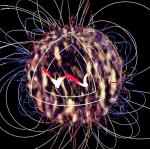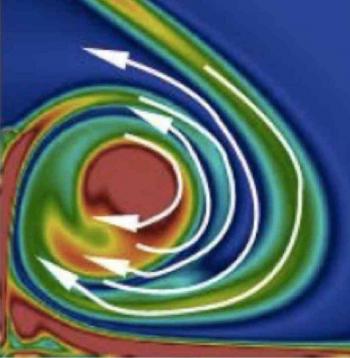Thanks to new numerical simulations, a scientific team led by researchers from the Astrophysics Department-Laboratory AIM of CEA-Irfu has succeeded in explaining why the magnetic field of the Sun reverses every 11 years. Scientists have highlighted the existence of a strong feedback between the star magnetic field and its internal rotation profile, with temporal modulations that ultimately determine the period of the cycle. This major discovery in the understanding of the origin of the star magnetic fields is published on July 14, 2017 in the journal Science.
See the video :  The magnetic cycle of the Sun in virtual reality (CEA Astrophysics)
The magnetic cycle of the Sun in virtual reality (CEA Astrophysics)
An international team, including researchers from the Department of Astrophysics (CEA-Irfu) and Department of Solid State Physics (CEA-Iramis), conducted an unprecedented simulation based on the Von-Kármán-Sodium (VKS) dynamo experiment (CEA-CRS-ENS) [1], to examine more closely how the liquid vortex created in liquid sodium by the propellers of VKS device can generate a magnetic field. The researchers studied the effects of electrical resistivity and fluid turbulence on the generation and collimation of the magnetic field. The detailed modeling shows how a magnetic field can emerge by dynamo effect within a turbulent conductive liquid. These results, published on May 23, 2017 in the journal Physics of Plasma, give to astrophysicists a crucial clue on the generation of magnetic fields within stars or planets.
The space mission KEPLER, launched in March 2009 to investigate exoplanets, has just delivered its first results on the vibrations of stars. Several international teams of scientists, including members of the Astrophysics Division (CEA-Irfu) have shown, using this first data, that starquakes not only make it possible to probe the interior of stars but they also allow determination of their age and tell us whether or not the stars belong to a cluster. The results are the subject of four articles published in a special edition of Astrophysical Journal Letters dedicated to the Kepler Mission



